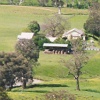Rubicon Defence
From anti-aviary to smart amour
The Rubicon Federation didn't develop its anti-missile deflector overnight. The first practical version was made by Rodney Tapel, an orchardist who developed an anti-aviary device; he wanted to keep birds out of his trees - not in - so it was an `anti-aviary'. He used television cameras to figure out where the parrots were and low power lasers to scare them away. This system became very popular on orchards right around the country. In fact they are one of the few exports from Rubicon.
The next big development was when a computer science lecturer at Desert Springs University encouraged his students to work on the massively parallel computing problems involving in the anti-aviary. The computing problems were solved very quickly because of the thousands of student hackers who worked on the code and shared their ideas freely.
And it was just after an outbreak of the mosquito borne disease, Lorse River fever, that some of his students developed it further; to detect and shoot down mosquitos with lasers.
So it wasn't really a hard step for the Rubicons to develop the technology to deflect missiles. But Maxel hadn't picked up this research because it was agricultural and not military research.
The latest advance was `smart armour'. Smart armour detects projectiles heading for the person (or horse or whatever) that is being protected; looks at the trajectories of the projectiles and if they are going to hit the person or horse they are deflected. The parallel processing power needed to do this is incredible and it is only possible because of the very fast networking of every computer in Rubicon. So thousands of these computers working together can solve the very complex mathematics in the extremely short times needed to work out the trajectories and direct the uv-lasers and so deflect the projectiles so they miss the person protected.
Back to Maxel Query
Return to Rubicon Query
© Copyright 1999, Julie Peters
julie@natasha.ironbark.id.au



